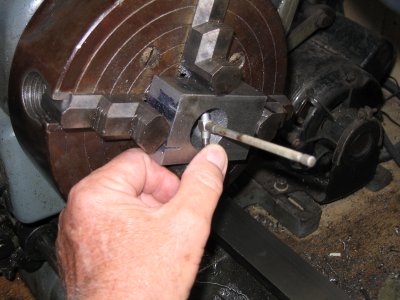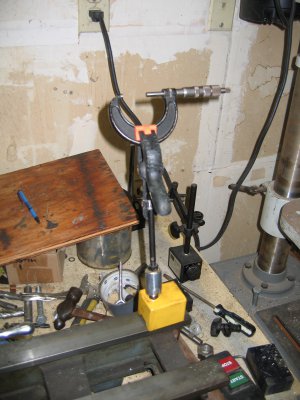- Joined
- Dec 18, 2019
- Messages
- 6,447
So, thought I had a handle on this... Made many successful (consistent) measurements right down to the tenth. But seem to have lost my mojo. Trying to measure in-situ the bore. Can't seem to get a consistent measurement any more. Yes, it has to be my technique. If I reinsert the gage into the bore, I can tell it's not at the true bore diameter. Oh yeah, the boring bar is in the way too. Can't move it far enough away. As it is, the back side of the boring bar is inside the tail stock.
According to my calculations, I should be about 0.0016" under 1.0000" I am trying to hit 1.0000. I now get measurements all over the place. (+/-0.001). The cap I have is 0.9991 (tried to hit 0.9995) doesn't fit in the bore, so I'm pretty sure I am under that.
So I walked away from the lathe. Don't want to make the hole oversize. What is the recommended best practice for using these inside bore gage gizmos?
According to my calculations, I should be about 0.0016" under 1.0000" I am trying to hit 1.0000. I now get measurements all over the place. (+/-0.001). The cap I have is 0.9991 (tried to hit 0.9995) doesn't fit in the bore, so I'm pretty sure I am under that.
So I walked away from the lathe. Don't want to make the hole oversize. What is the recommended best practice for using these inside bore gage gizmos?




